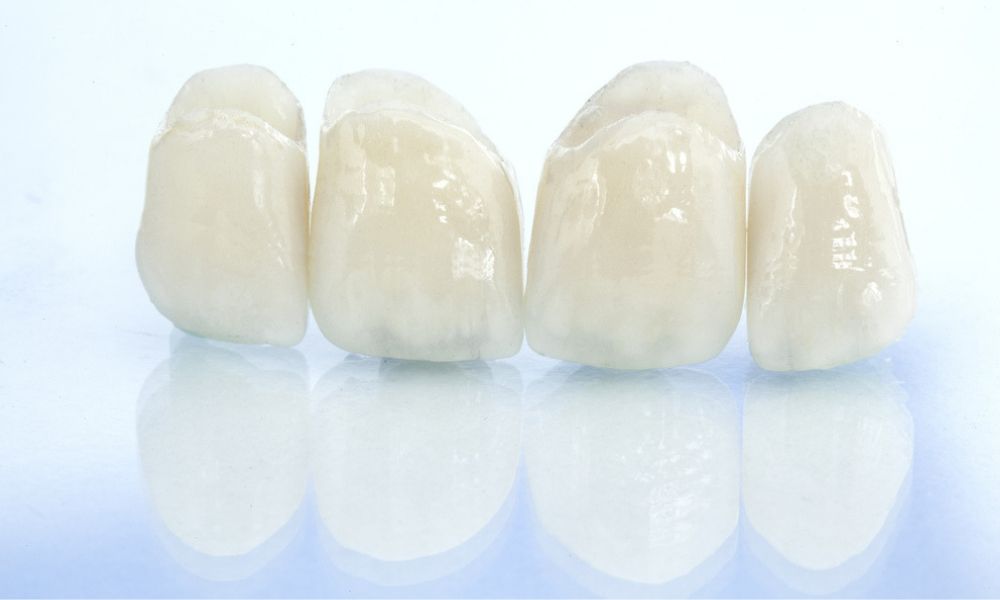Dental health is a critical aspect of overall wellness, yet it is often neglected until a problem arises. One of the most common dental problems is tooth decay, which is caused by the breakdown of the tooth structure by bacteria.
In this blog, we will explain the amazing science of cavity development and tooth decay, its symptoms and stages, preventive measures, treatment options, and the role of dental labs in treating tooth decay.
The Science of Cavity Development
To understand how cavities form, we must first look at the role of bacteria in tooth decay. Our mouths contains millions of bacteria, some of which are harmful and can cause tooth decay. These bacteria feed on sugar and carbohydrates in our food, producing acid as a byproduct. The acid, in turn, erodes, the hard outer layer, the tooth enamel that protects the tooth.
Saliva plays a crucial role in neutralizing the acid produced by the bacteria, helping to prevent cavities. However, if the acid production is too high or if there is a lack of saliva flow, the tooth enamel may weaken, leading to cavities.
Symptoms and Stages of Tooth Decay
Tooth decay is a progressive dental problem that can cause significant damage to the teeth and surrounding tissues if left untreated. Understanding the symptoms and stages of tooth decay is essential in detecting and treating it early, preventing further damage and potential complications.
The symptoms of tooth decay can dep on the severity and location of the decay. In the early stages of decay, there may be no visible signs or symptoms. However, as decay progresses, the following symptoms may occur:
● Tooth Sensitivity:
Tooth sensitivity is a common symptom of tooth decay. Patients may experience discomfort or pain when consuming hot or cold food and beverages.
● Pain when Chewing:
If you experience pain while chewing or biting down, it could be a sign of tooth decay. This pain may be strong or less and may increase over time.
● Visible Holes or Pits in Teeth:
As tooth decay progresses, visible holes or pits may appear on the surface of the teeth. These holes can be black, brown, or gray in color.
● Unpleasant Taste in the Mouth or Bad Breath:
Bacteria that cause tooth decay produce foul-smelling gases that can result in bad breath or an unpleasant taste in the mouth.
The stages of tooth decay are categorized based on the level of damage to the tooth structure. There are three stages of tooth decay:
● Enamel Decay:
Enamel is the hard, outermost layer of the tooth. In the initial stage of tooth decay, bacteria in the mouth produce acid that attacks the enamel, causing it to weaken and demineralize. This stage is reversible with proper dental care, including brushing, flossing, and fluoride treatments.
● Dentin Decay:
Dentin is the softer layer of the tooth that lies beneath the enamel. If enamel decay is left untreated, the bacteria can reach the dentin, causing it to break down and form a cavity. This stage is irreversible, and dental treatment is necessary to prevent further damage.
● Pulp Decay:
The pulp is the innermost part of the tooth that contains nerves, connective tissue, and blood vessels. If decay reaches the pulp, it can lead to infection and inflammation, resulting in a toothache, swelling, and pus formation. At this stage, a root canal treatment may be necessary to save the tooth.
It is essential to seek professional dental care if you feel any symptoms of tooth decay. Early detection and treatment can prevent further damage to the tooth and surrounding tissues and minimize the need for more invasive and costly dental procedures.
Preventive Measures Against Tooth Decay
Prevention is the key to avoiding tooth decay. Some of the most effective preventive measures include regular brushing and flossing, avoiding sugary and acidic foods and drinks, and maintaining a balanced diet and good oral hygiene habits.
Regular dental check-ups and cleanings are also crucial in detecting and treating tooth decay before it progresses to more severe stages.
Treatment Options for Tooth Decay
If caught early, tooth decay can often be treated with fillings, which involve removing the decayed part of the tooth and filling it with a composite resin. If the decay is more severe, a crown or a root canal may be required to save the tooth.
It is essential to seek treatment for tooth decay as soon as possible, as it can lead to significant complications and even tooth loss if left untreated.
Role of Dental Labs in Treating Tooth Decay
Dental labs play a crucial role in treating tooth decay, as they are responsible for creating dental prosthetics and devices that aid in the restoration of damaged teeth. Quality materials and skilled craftsmanship are essential in ensuring the effectiveness and longevity of these devices.
For example, dental labs NYC and other cities offer custom-made dentures, bridges, and crowns that can restore damaged or missing teeth. These prosthetics are designed to match the patient’s natural teeth, providing a seamless and aesthetically pleasing appearance.
When looking for a “denture lab near me,” it is essential to choose one that uses high-quality materials and has a team of skilled technicians. A reputable dental lab can ensure the precision and accuracy of the prosthetics, minimizing the risk of complications and ensuring long-lasting results.
Conclusion
Tooth decay is a common dental problem which can have severe consequences if left untreated. However, with proper dental hygiene and regular check-ups, it is preventable and treatable. Dental labs play a critical role in restoring damaged teeth and providing patients with functional and aesthetically pleasing prosthetics.
If you are experiencing tooth decay or are in need of dental prosthetics, it is crucial to seek professional dental care and find a reputable denture lab near me. By prioritizing your dental health and working with skilled dental professionals, you can ensure a healthy and beautiful smile for years to come.


